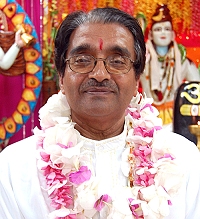From a satsang with Paramacharya of SWAHA Pt. Hardeo Persad
Pitra Paksha is a period of time when we become more conscious of the fact that we have benefited from the sacrifices and efforts of those who have preceded us. This includes not only our ancestors, but all of society who have contributed to our personal development as well as that of the world we live in. On a daily basis we are urged to remember our five debts of gratitude, one of which is to the pitris (ancestors) as well as to God, the rishis (sages), the society and the lower forms of creation. The sages in their wisdom created this period of time and its rituals dedicated to the remembrance of and gratitude to the ancestors for their contribution to our present lives.
In observing Pitra Paksha, we must realise that death is just an aspect of life. It is a transition from one state of being to another. The scriptures tell us that the soul does not die and that it is reborn into another body dependent on its past karmas (conduct, actions). From a scientific perspective, it is acknowledged that energy does not end; it merely changes form. The soul is a part of the Divine Energy. Yogis tell us that it is without death. It is likened to a circle of infinite circumference whose centre point is in the body.
If the body alone dies, which is made of matter, then we must ask ourselves, who is the pitra? To answer this question we must understand that we live in Brahma Prapanch, the world of created objects and beings, where we are subjected to space, time, causation, name and form. As human beings, we are attached to form and name because our minds identify with them. This attachment to name and form informs many of our practices but the ultimate goal is to transcend that attachment by realising that we are part of the infinite soul. All who have departed, our pitris, are within the infinite circle of the soul.
When we perform the rituals related to Pitra Paksha, it is said that all beings benefit, from the ants to the atmosphere. We express our gratitude to all of creation; in fact, all who have lived in the world before us, sarva pitra, have made some contribution to the world, whether positively or negatively. When we perform pitra havan and we make our various offerings, we do it for everyone. However, beyond the physical offerings, the act of offering itself brings merit to the devotee and positive energy is transmitted to the rest of the world. Beyond the ritualistic practices, pitri yagya means maintaining the principles and practices that were handed down to us from our ancestors.
During the time of death, worship of Bhagavan Shree Krishna and the Bhagavad Gita, is advised, particularly His discourse on the nature of the soul and its relation to death. Shree Krishna also personifies Virat Swaroop, the cosmic form, the Supersoul. The individual is part of the Supersoul so we must reflect upon the Divine as Supersoul. It is a recognition that the soul has gone beyond form, and perhaps to other forms through the process of reincarnation. Life’s journey is similar to crossing the ocean of duality where we ask God, the boatman, to carry us safely and free us from the bondage of birth and death. We also ask the Divine to give us the right knowledge so that we can face up to the separations from loved ones that we must inevitably face in this journey of life.



